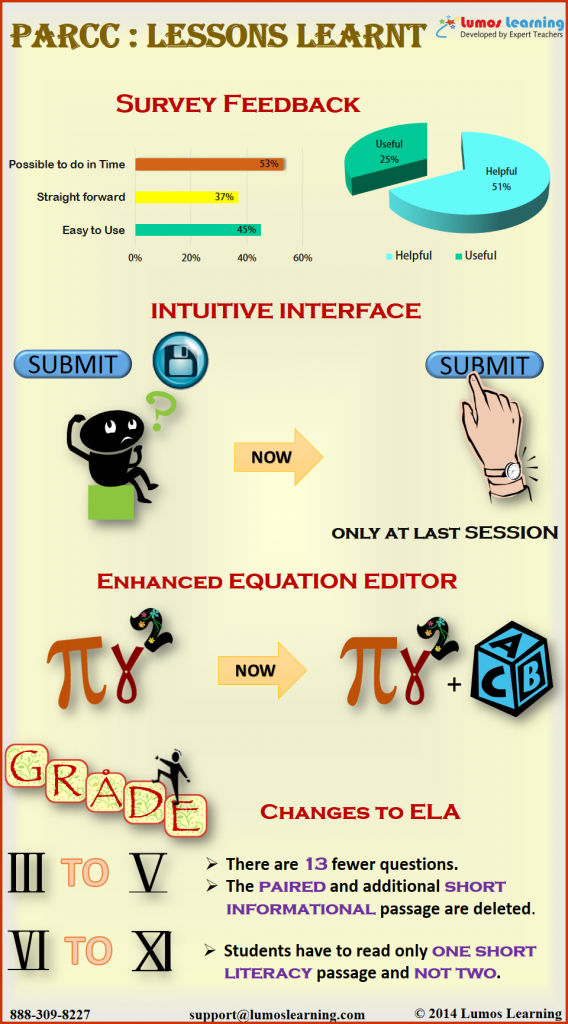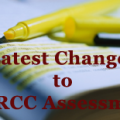This past spring, more than one million students took part in the PARCC field test with the purpose of helping to “ensure the assessments are valid, reliable, and fair.”www.parcconline.org/whats-next
Now, with the testing completed, PARCC has had the opportunity to review the feedback from teachers, students and technology coordinators via surveys, Twitter comments, and phone calls. To keep educators and other stakeholders abreast of this feedback, PARCC has been releasing its findings throughout the summer, and these articles will eventually become part of a larger “Lessons Learned” Report that will be available to the public.

The Basics
On the survey, test and technology coordinators responded to questions related to the test administration’s set-up and the PARCC training and resources. Here are a few key highlights from “Administration Set-Up” category:
• 45% of the respondents felt that the portal to register students and set up test sessions was easy to use.
• 37% felt the registration process and was “straightforward.”
• 53% felt the tasks that were necessary to complete before the test were “possible to do in the time and manner described.”
As for training and resources, more than half of the respondents (51%) agreed that their students found the tutorials helpful; however, only 25% of those surveyed viewed the PARCC training modules and found those to be useful.
PARCC has also responded to the test administrators’ open-ended responses that were part of the survey: with the 2015 test administration, PearsonAccess will aim to allow easier movement of students into other test sessions, simplify its make-up test procedures, and create shortened test administrator manuals that are easier to navigate.www.parcconline.org/lessons-learned-part-2-digging-survey-results
Technology Feedback
To reduce confusion and increase ease of usability, PARCC has responded to the following concerns and issues from the spring field test:
• The “Submit” button will only appear on the last session, since having this button alongside the “Save” button became confusing to users – and sometimes locked them out of a testing session.
• PARCC plans to make changes to the “equation editor” so that this tool will not only be more user-friendly but also will let users know when they are allowed to add text to explain their reasoning (in addition to building an equation with the editor tool).
•Other tools will be revisited as well, such as the drag-and-drop tool and the highlighter. PARCC plans to “work with a vendor to conduct a large-scale ‘dress rehearsal’ to identify issues with the tools and develop solutions to further improve functionality.”
•Loading videos became a challenge for some test-takers; however, once the school used the correct content filters, this became a non-issue in most cases.
www.parcconline.org/lessons-learned-part-3-technology
Changes to ELA
Another area that will see change as a result of user feedback is on the ELA test. In the 2015 test administration, PARCC plans to make the following revisions:
• For grades 3-5, there will be 13 fewer questions. Students will still read one short literary passage and one long informational passage, but the “paired” passage set and additional short informational passage will be deleted from the test.
• For grades 6-11, students will read only one (not two) short informational passage, while most of the sections will remain relatively unchanged: one short literary passage, one “paired” passage, and one long informational passage.
Note: “Paired” passages are defined as either “two short literary passages, two short informational passages, or a literary and informational passage.”)

Although the shorter test will most likely reduce both time and cost to administer, PARCC maintains, “the range of standards measured” and the assessment’s quality “will remain the same.”
www.parcconline.org/parcc-states-reduce-no-items-elaliteracy-portion-test
By reflecting on this feedback, PARCC intends to be better able to meet the needs of both the test takers and test administrators, all while remaining consistent with their original belief that “assessment should work as a tool for enhancing teaching and learning.”
www.parcconline.org/about-parcc






Pingback: PARCC Field Test: Recap of “Lessons Learned” | Think Educative